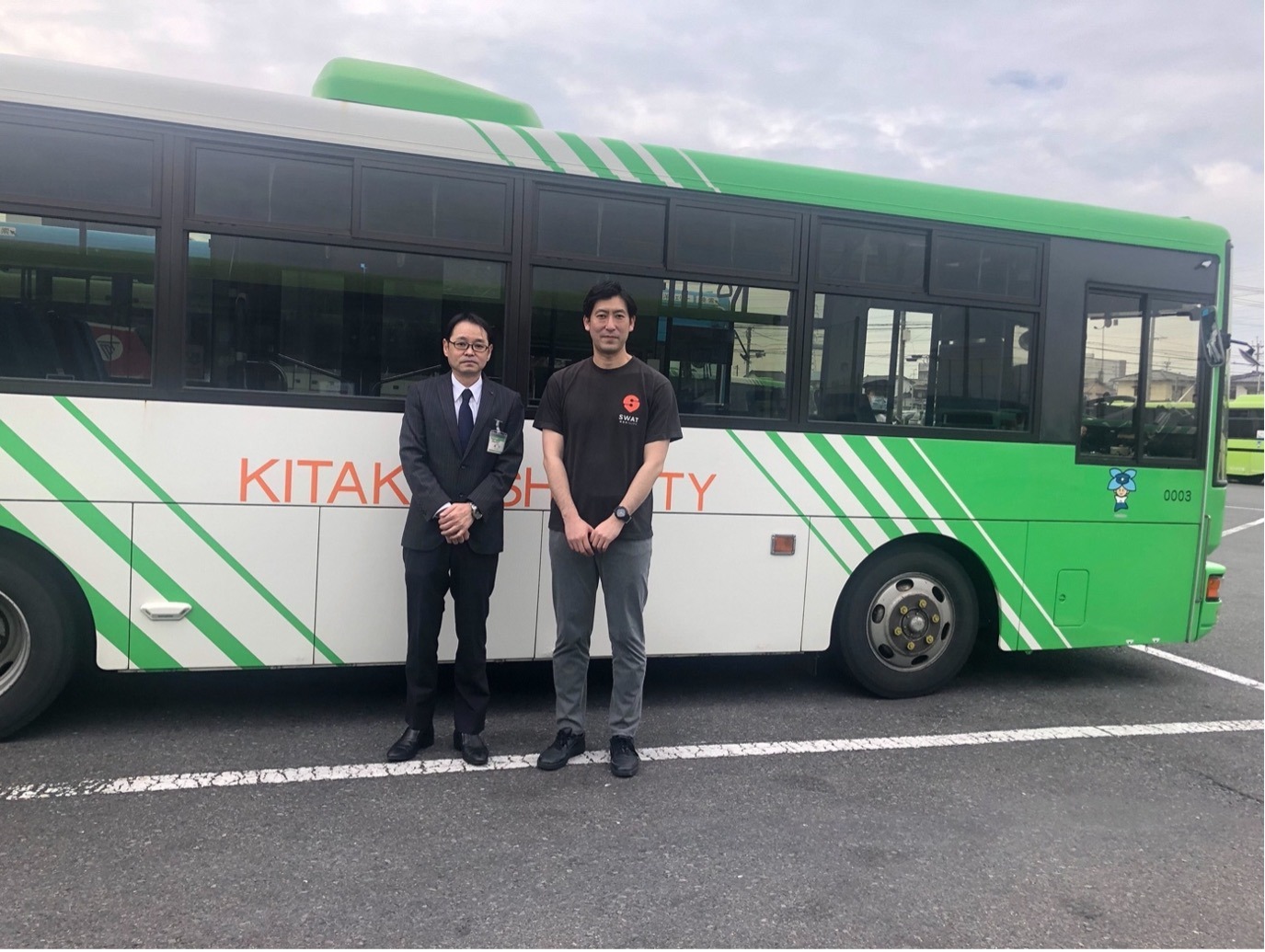Q: What challenges does the Kitakyushu City Transportation Bureau face?
A: To revise our bus timetables, our staff have to manually extract and analyze passenger data to determine new operating times and frequencies. This analysis is extremely time-consuming. It takes six months to a year of analysis before we can implement a revision. We have a team of two staff members that work exclusively on revisions, but it’s still not enough. We have had to bring in one or two more employees to support them. Another difficulty we face is that incorporating user feedback often leads to overly complicated routes.
Q: Why did you agree to a trial with SWAT Mobility?
A: We were first introduced to SWAT through the Startup SDGs Innovation Trial Project (Proof-of-Concept Support Programme) implemented by the Startup Promotion Division of the Kitakyushu City Industrial and Economic Affairs Bureau.
After preliminary discussions, we decided to proceed with the trial as we saw the potential to solve our challenges after reviewing SWAT Mobility’s track record and unique algorithms.
Q: What discoveries did you make through this trial?
A: We discovered bus stops that were completely unused, and recognised the potential for new routes from SWAT Mobility’s proposed routes. Additionally, we were able to visualize carbon emissions for the first time, an insight we had never had before. For an eco-town like Kitakyushu City, I think that this is a crucial metric.
Q: What improvements do you foresee from this trial?
A: By far, the biggest bottleneck in the timetable revision process is the immense amount of time spent on analysis. By shortening this analysis time, we can reduce our labour costs.
Also, having an accurate analysis will allow us to operate with the most optimal number of vehicles.
Q: How did the Transportation Bureau staff react to this trial?
A: The visualisation of analysis results was particularly striking, as it allowed us to intuitively grasp the current situation and pinpoint key issues. We are very interested and hopeful as by reducing the time taken for analysis, our staff can instead focus on other tasks essential for timetable revisions, and also because we believe that the analysis itself will yield new discoveries.
The graph illustrating the correlation between the number of passengers and the frequency of buses was particularly surprising as it offered a new perspective.
Q: What areas would you like to collaborate with SWAT Mobility on in the future?
A: We hope that by applying diverse analysis methods beyond our existing ones, our timetable revisions can ensure the long-term viability of our bus business.
Regardless of whether they are privately or publicly operated, I believe it will be difficult for bus companies to survive in the future unless they can accurately capture new and emerging transport demands. For example, when new housing developments are built in previously undeveloped areas, local transport demands will change. It's thus crucial to efficiently implement timetable revisions that capture this new demand.
We believe that public transportation can become much more convenient through accurate assessment of current situations, establishing effective timetables, and using predicted travel demand based on visualised passenger flows to provide efficient bus services.
Consequently, we anticipate this will reduce private car usage and contribute towards achieving a decarbonised society.




.webp)

.svg)

